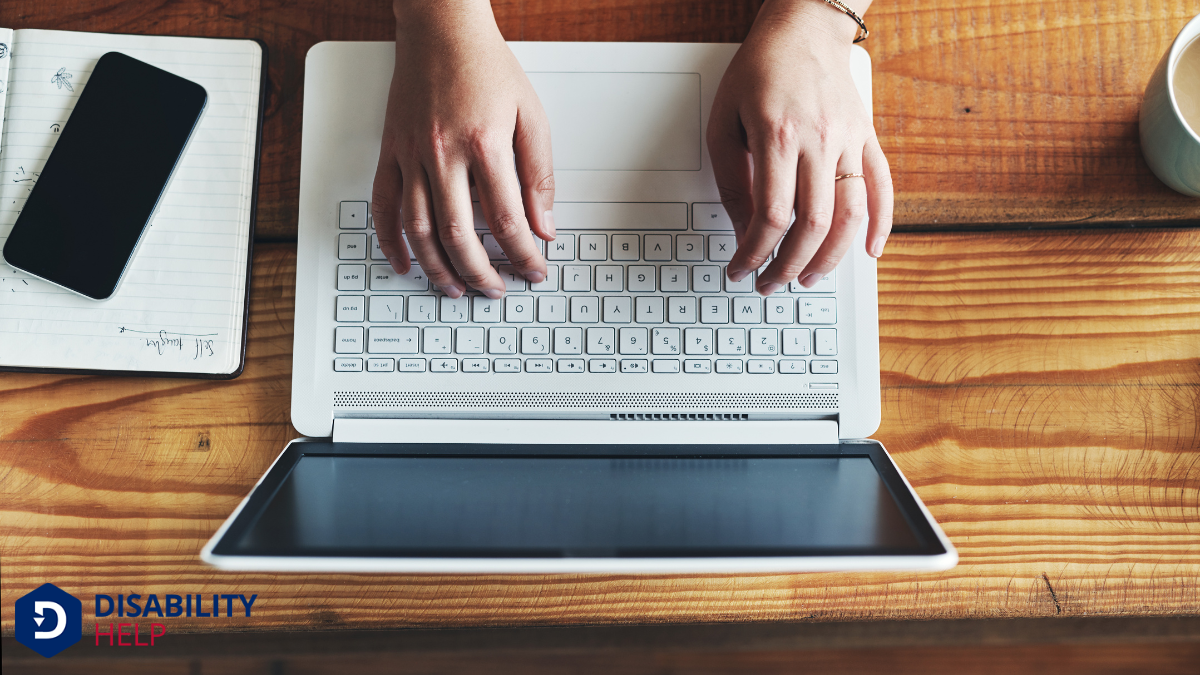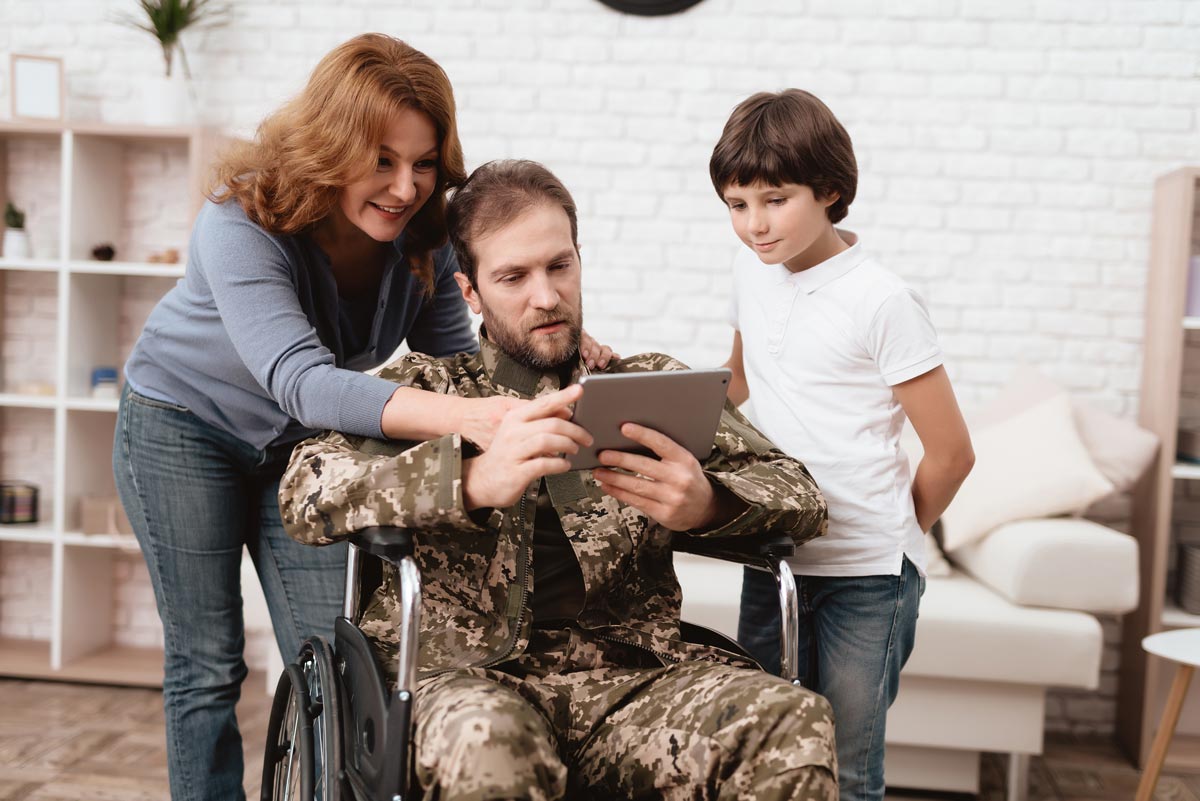Let's explore the fascinating world of assistive technologies for those who can't hear. These innovations, ranging from advanced hearing aids to real-time transcription services, revolutionize how individuals experience sound and communication. By enhancing engagement and inclusivity, they empower people to connect in ways previously unimaginable. Are you curious about how these technologies work and their impact on daily life? There's so much more to uncover.
Key Takeaways
- Advanced hearing aids enhance sound clarity, filter background noise, and offer connectivity features for better communication.
- Cochlear implants restore hearing by stimulating the auditory nerve and improve speech understanding and safety.
- Assistive listening devices amplify sound for clearer communication in various settings, including public spaces.
- Real-time transcription services convert spoken words into text, promoting inclusivity and accessibilityThe design of products, devices, services, or environments to be usable by people with disabilities.....
- Video relay services use video calls and sign language interpreters for seamless communication between deaf and hearing individuals.
Advanced Hearing Aids: Enhancing Sound Perception
Advanced hearing aids have revolutionized how we perceive sound by offering features that go beyond simple amplification. It's recognized that hearing lossPartial or total inability to hear sounds in one or both ears. can be isolating, but modern hearing aids are designed to bridge that gap. These devices don't just make sounds louder; they enhance clarity and filter out background noise, allowing us to focus on the sounds that matter.
With digital technology, hearing aids adaptA grassroots disability rights organization in the U.S. that focuses on promoting community-based se... to different environments automatically, ensuring we experience consistent sound quality.
Moreover, connectivity options allow seamless pairing with smartphones and other devices, letting us stream music or phone calls directly to our ears. This integration simplifies daily life and enhances communication.
Cochlear Implants: Restoring Hearing Capabilities
Let's explore how cochlear implants can restore hearing capabilities for those who can't hear.
We'll look at how these implants work, the benefits they offer, and the latest advancements in their technology.
Together, we'll understand how these devices are transforming lives.
How Cochlear Implants Work
While the concept might seem complex, cochlear implants work by directly stimulating the auditory nerve, bypassing damaged parts of the ear. They consist of two main components: an external processor and an internal implant.
The external processor, worn behind the ear, captures sound and converts it into digital signals. These signals are sent to the internal implant, which is surgically placed under the skin.
Once the internal implant receives these signals, it translates them into electrical impulses. These impulses travel to the auditory nerve, allowing the brain to interpret them as sound.
This direct stimulation approach helps us perceive sounds, even when our natural hearing mechanisms are impaired. By doing so, cochlear implants provide a new pathway for hearing, offering possibilities for those with significant hearing loss.
Benefits of Cochlear Implants
Because cochlear implants create a new way for us to process sound, they offer significant benefits for individuals with severe hearing loss.
These devices don't just amplify sound; they convert it into electrical signals that the brain can interpret. This transformation improves our ability to engage with the environment in several ways:
- Enhanced Communication: Cochlear implants facilitate clearer speech understanding, allowing us to participate in conversations more effectively.
- Safety Improvements: By restoring our ability to hear important sounds like alarms and sirens, cochlear implants enhance personal safety.
- Cognitive Benefits: Access to sound can help in maintaining cognitive functions by stimulating the brain and keeping it active.
Together, these benefits improve our quality of life and integrate us more fully into the hearing world.
Advancements in Implant Technology
As technology rapidly evolves, cochlear implants are becoming more sophisticated, offering enhanced hearing experiences and greater convenience. We’re witnessing breakthroughs in both sound quality and device comfort.
Modern implants are smaller, making them less noticeable and more comfortable for daily wear. Improved processing chips now allow for clearer sound, helping users better distinguish speech in noisy environments. Battery life is extending, reducing the need for frequent recharging.
We’re also seeing advancements in wireless connectivity. Many implants now connect effortlessly to smartphones and other devices, allowing users to stream audio directly.
This integration provides a seamless experience, empowering individuals to engage more fully with the world around them. These innovations mark a significant step forward in restoring hearing capabilities for those with hearing loss.
Real-Time Transcription Services: Bridging Communication Gaps

In today's fast-paced world, real-time transcription services play an essential role in bridging communication gaps for individuals who can't hear. These services convert spoken words into written text instantly, allowing us to communicate effectively and inclusively.
Imagine the empowermentThe process of gaining control, authority, and power over one’s life, often used in the context of... that comes from being able to follow along in a meeting or fully engage with a live presentation.
Here are three key benefits of real-time transcription services:
- Inclusivity: Everyone can participate in conversations without missing crucial information.
- Accessibility: It provides an on-the-spot solution for those who rely on textual data instead of auditory input.
- Convenience: These services are available across various platforms, whether during a Zoom call or a live conference.
Visual Alert Systems: Ensuring Safety and Awareness
When it comes to guaranteeing safety and awareness for individuals who can't hear, visual alert systems are indispensable tools. These systems transform environmental sounds into visual signals, helping us stay aware of important situations. For instance, flashing lights can alert us to doorbells, smoke alarms, or even someone entering the room. By utilizing these visual cues, we gain independence and confidence in our surroundings.
Visual alert systems integrate seamlessly into everyday life. Devices can be tailored to our specific needs, whether it’s a vibrating pillow to wake us in emergencies or a light that flashes when the phone rings.
Adapting our environments with these technologies empowers us and guarantees we don't miss vital alerts. Together, let’s embrace these innovations for a safer and more connected life.
Assistive Listening Devices: Boosting Sound Clarity
While visual alert systems keep us aware of our surroundings, assistive listening devices focus on enhancing sound clarity for those who struggle to hear. These devices are crucial for improving our ability to engage in conversations and enjoy auditory experiences.
Let’s explore three key types:
- Personal Amplifiers: These portable devices increase sound levels, making them ideal for one-on-one conversations or small group settings.
- FM Systems: Utilizing radio signals, FM systems transmit a speaker’s voice directly to our hearing aid or cochlear implantA surgically implanted electronic device that provides a sense of sound to a person who is profoundl..., reducing background noise interference.
- Induction Loop Systems: Installed in public spaces, these systems send sound wirelessly to our hearing aids, enhancing clarity during events or performances.
Communication Apps and Software: Facilitating Interaction

Let's explore how communication apps and software are transforming interactions for those who can't hear.
Speech-to-text tools allow for real-time transcription, making conversations more accessible and inclusive.
Additionally, video relay services enable seamless communication by connecting users with interpreters, bridging the gap between different modes of interaction.
Speech-to-Text Tools
As technology evolves, speech-to-text tools have become invaluable for individuals who are deaf or hard of hearing, enhancing their ability to communicate effectively.
These tools convert spoken words into written text in real-time, making conversations more accessible.
Let’s explore some key features:
- Accuracy: Advanced algorithms guarantee high precision in transcribing speech, reducing misunderstandings and allowing for smoother interaction.
- Versatility: Many apps work across various devices like smartphones, tablets, and computers, offering flexibility in different settings.
- Customization: Users can adjust settings such as font size and language preferences to suit their needs, making the experience more user-friendly.
Video Relay Services
Video Relay Services (VRS) empower individuals who are deaf or hard of hearing by facilitating real-time communication through video calls.
With VRS, we can use sign language to communicate with hearing individuals via a video interpreter. It’s a game-changer for bridging communication gaps and ensuring we feel connected and understood. This service allows us to maintain the nuances of conversation that might be lost in text-based communication.
When we use VRS, we connect with a qualified interpreter through a smartphone or computer app. They relay our message to the hearing person on the call and vice versa.
It’s not just about making calls; it’s about enabling seamless interaction in our daily lives, from personal conversations to professional settings.
Conclusion
We've explored a variety of assistive technologies that empower individuals who can't hear, enhancing communication and inclusivity. From advanced hearing aids and cochlear implants to real-time transcription services and visual alert systems, these innovations bridge gaps and guarantee safety. Assistive listening devices and communication apps further boost interaction and sound clarity. Together, these tools create a more connected world, allowing everyone to engage fully and confidently in different settings. Let's embrace and support these advancements for a more inclusive future.






